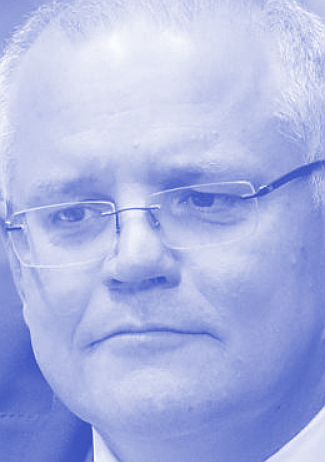PEFO shows election spree
 Official figures show the Morrison Government has overseen a $700 million spending increase since its March budget.
Official figures show the Morrison Government has overseen a $700 million spending increase since its March budget.
The Pre-election Economic and Fiscal Outlook (PEFO), prepared by bureaucrats at Treasury and the Department of Finance, shows policy decisions taken since the budget have worsened the bottom line by $714 million over the four years to 2025-26.
The additional spending appears to cover announcements from just the first two weeks of the election campaign, with the Treasurer and Finance Minister signing their PEFO declarations on April 12.
Much of the extra money has been put aside for election commitments to local infrastructure projects, particularly sporting facilities and roads.
This includes an extra $117 million for the Community Development Grants program, $15 million each towards the Frankston Basketball Stadium and Macedon Ranges Sports Precinct redevelopments, $6.1 million for the Pioneer River Levee, $5 million for a new pavilion at the Boronia Hawks Football Netball Club and the same amount for Neerim South Aged Care and the Scheyville Veterans Wellbeing Centre.
Additionally, the government’s Infrastructure Investment Program has had an additional $56 million in funding committed since the budget, including over $21 million in funding for road projects in Queensland, and $35 million for the Nicholson Road-Garden Street Grade Separation Project in Western Australia.
The report also outlines savings around $365 million over the next four years, due to decisions funded in previous budgets that were never publicly announced now being canned.
All up, the budget bottom line is virtually identical to what it was on March 29, but the PEFO papers say risks identified in the budget have intensified in the few weeks since it was published.
“Health developments in China also present a risk to global supply chains as China's aggressive suppression approach to managing the virus has the potential to lead to frequent lockdowns and disruptions to industrial production and normal consumption patterns,” the PEFO warned.
“Case numbers from the current COVID-19 outbreak have strongly increased since the budget, and new lockdowns have emerged in the key economic centre of Shanghai.”
It also notes that Russia's war in Ukraine is continuing to put pressure on surging prices for commodities and energy, adding to inflation domestically and globally.
“Government borrowing rates, proxied by the 10-year yield, increased between MYEFO and the 2022-23 budget, and have increased further over the past few weeks, reflecting domestic and global factors, particularly higher US bond rates,” PEFO says.
“Should this increase be sustained, interest payments on Australian Government Securities as a share of GDP would be around 0.1 percentage points higher in 2025-26 than estimated at budget.”
This will see about $2 billion more per year in interest payments, leaving government debt about $10 billion higher than previously forecast.
Gross debt is already projected to pass a trillion dollars within the next two years, with net debt approaching $800 billion over the same period.







 Print
Print